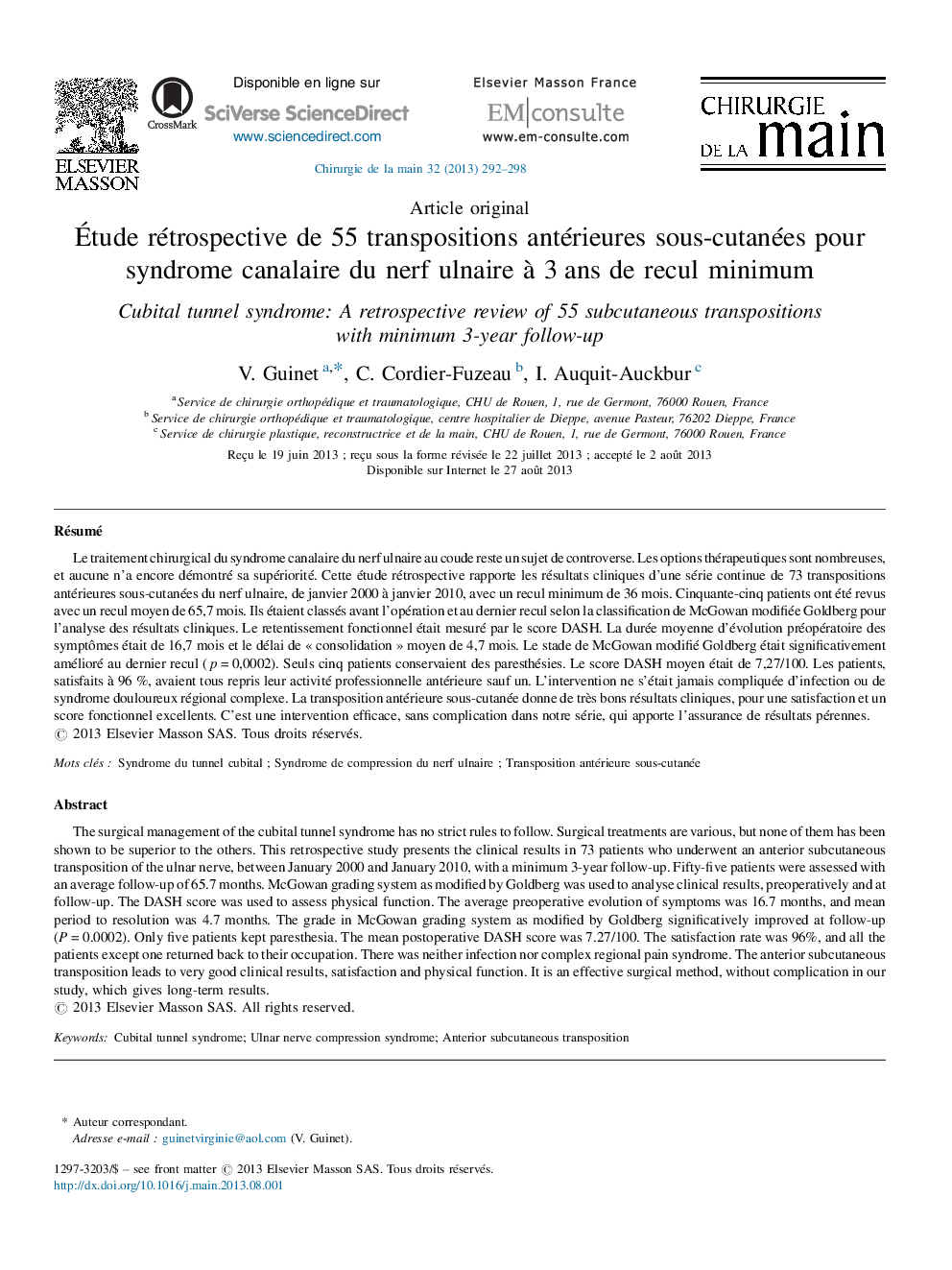| Article ID | Journal | Published Year | Pages | File Type |
|---|---|---|---|---|
| 4048834 | Chirurgie de la Main | 2013 | 7 Pages |
RésuméLe traitement chirurgical du syndrome canalaire du nerf ulnaire au coude reste un sujet de controverse. Les options thérapeutiques sont nombreuses, et aucune n’a encore démontré sa supériorité. Cette étude rétrospective rapporte les résultats cliniques d’une série continue de 73 transpositions antérieures sous-cutanées du nerf ulnaire, de janvier 2000 à janvier 2010, avec un recul minimum de 36 mois. Cinquante-cinq patients ont été revus avec un recul moyen de 65,7 mois. Ils étaient classés avant l’opération et au dernier recul selon la classification de McGowan modifiée Goldberg pour l’analyse des résultats cliniques. Le retentissement fonctionnel était mesuré par le score DASH. La durée moyenne d’évolution préopératoire des symptômes était de 16,7 mois et le délai de « consolidation » moyen de 4,7 mois. Le stade de McGowan modifié Goldberg était significativement amélioré au dernier recul (p = 0,0002). Seuls cinq patients conservaient des paresthésies. Le score DASH moyen était de 7,27/100. Les patients, satisfaits à 96 %, avaient tous repris leur activité professionnelle antérieure sauf un. L’intervention ne s’était jamais compliquée d’infection ou de syndrome douloureux régional complexe. La transposition antérieure sous-cutanée donne de très bons résultats cliniques, pour une satisfaction et un score fonctionnel excellents. C’est une intervention efficace, sans complication dans notre série, qui apporte l’assurance de résultats pérennes.
The surgical management of the cubital tunnel syndrome has no strict rules to follow. Surgical treatments are various, but none of them has been shown to be superior to the others. This retrospective study presents the clinical results in 73 patients who underwent an anterior subcutaneous transposition of the ulnar nerve, between January 2000 and January 2010, with a minimum 3-year follow-up. Fifty-five patients were assessed with an average follow-up of 65.7 months. McGowan grading system as modified by Goldberg was used to analyse clinical results, preoperatively and at follow-up. The DASH score was used to assess physical function. The average preoperative evolution of symptoms was 16.7 months, and mean period to resolution was 4.7 months. The grade in McGowan grading system as modified by Goldberg significatively improved at follow-up (P = 0.0002). Only five patients kept paresthesia. The mean postoperative DASH score was 7.27/100. The satisfaction rate was 96%, and all the patients except one returned back to their occupation. There was neither infection nor complex regional pain syndrome. The anterior subcutaneous transposition leads to very good clinical results, satisfaction and physical function. It is an effective surgical method, without complication in our study, which gives long-term results.
